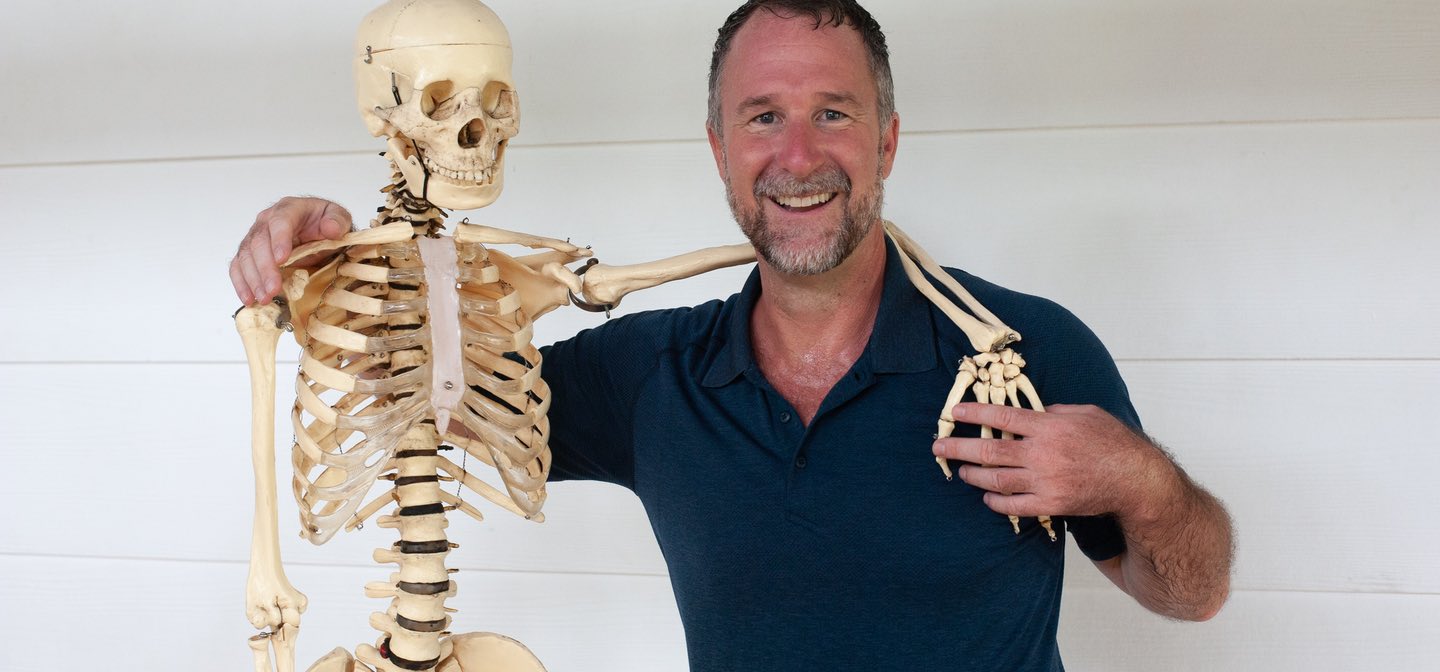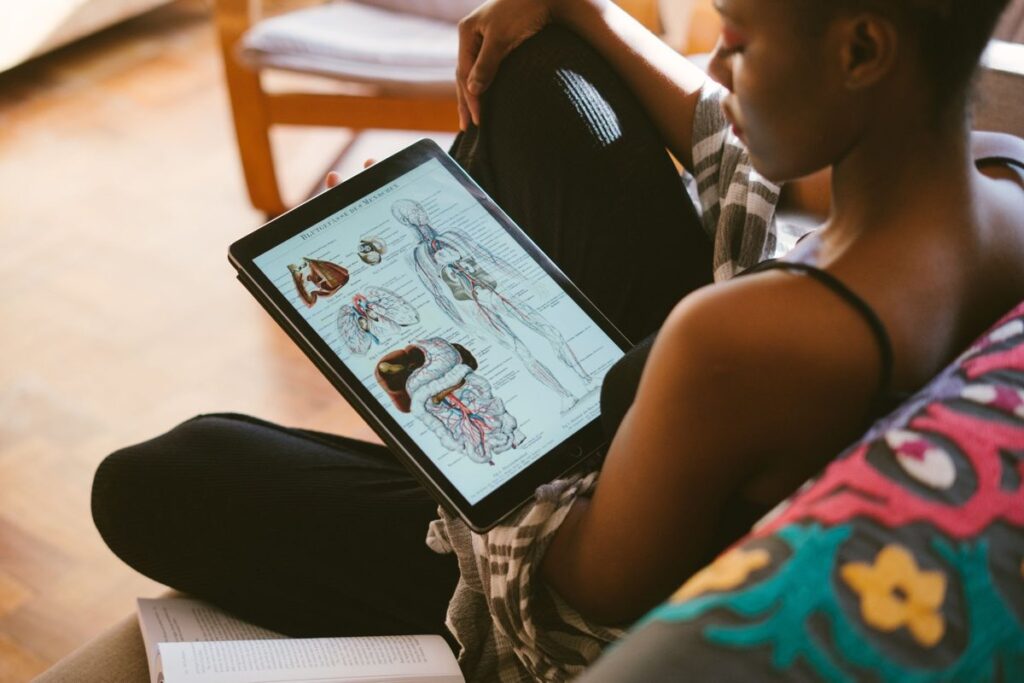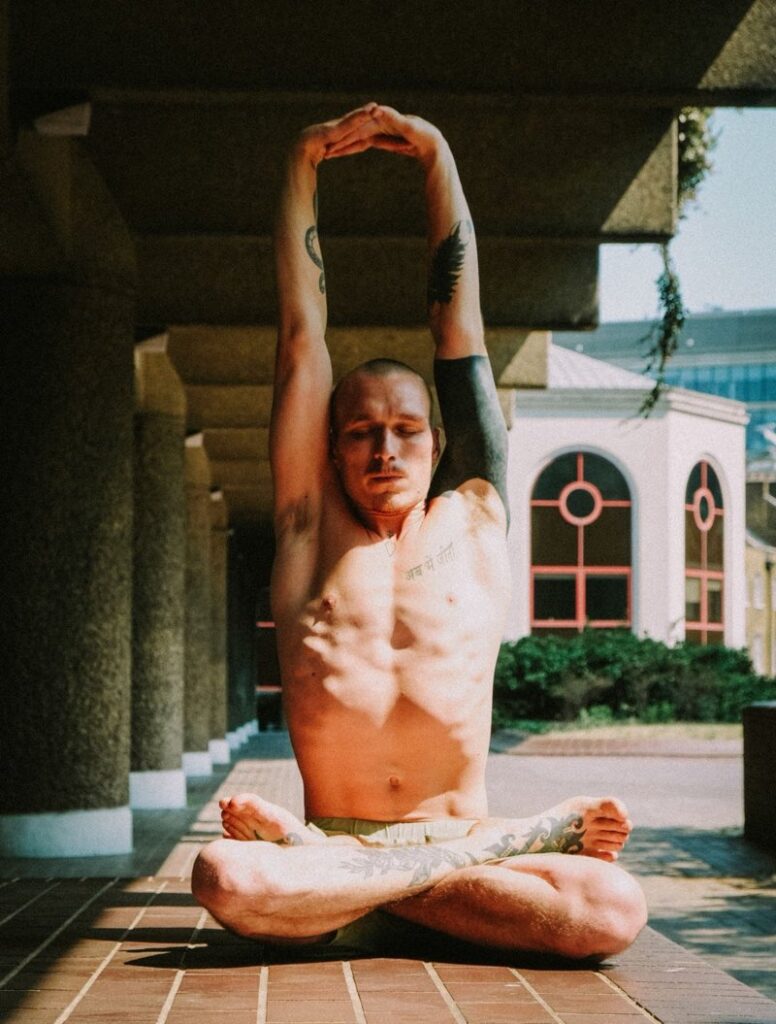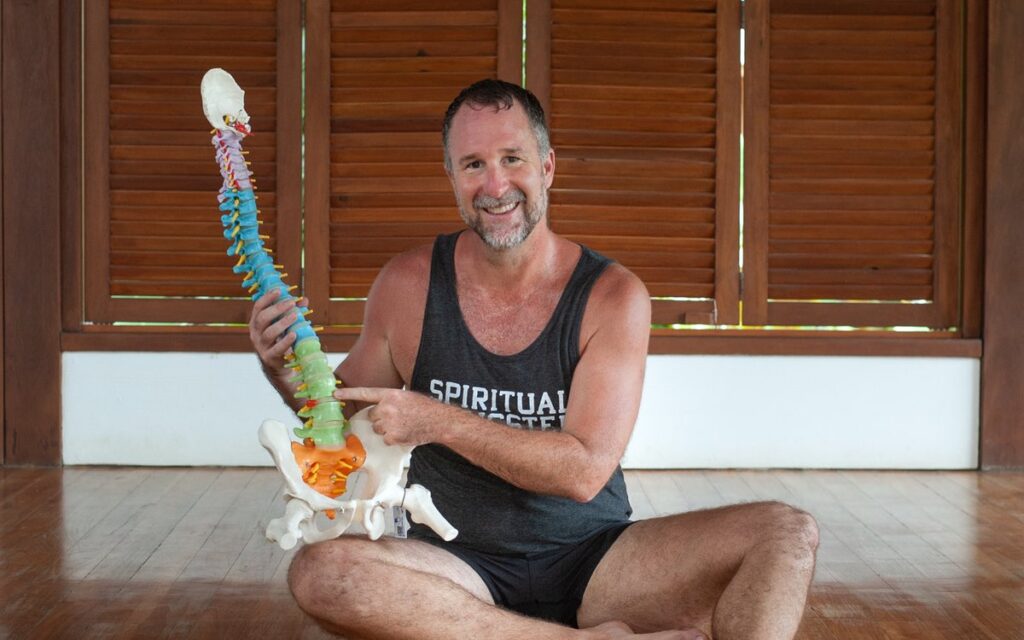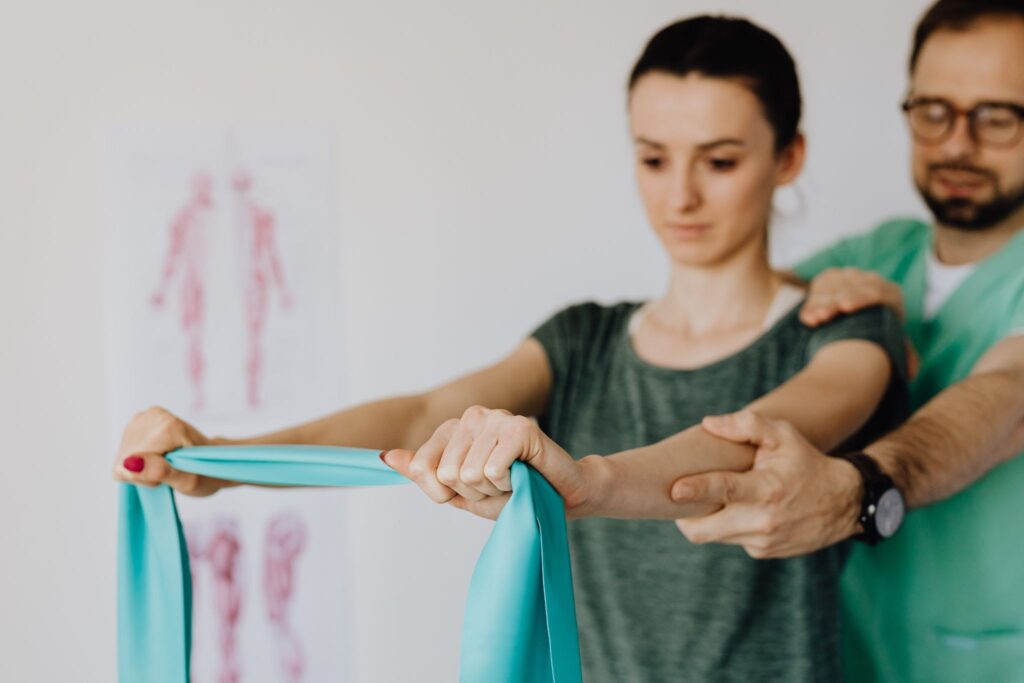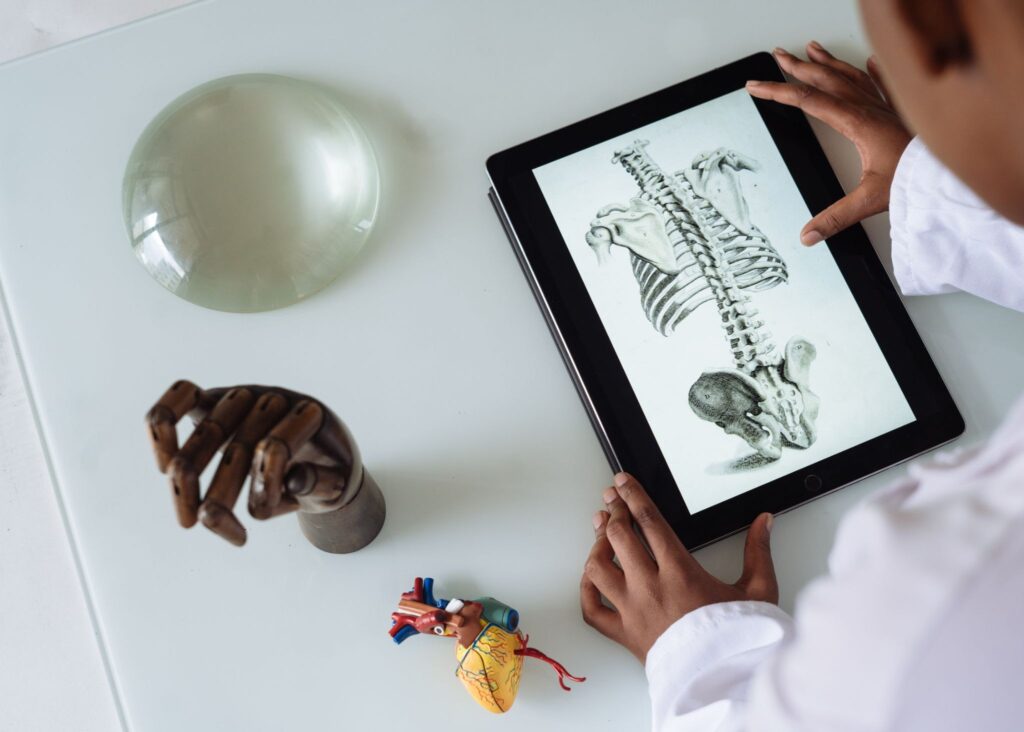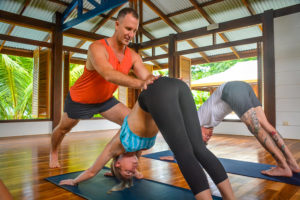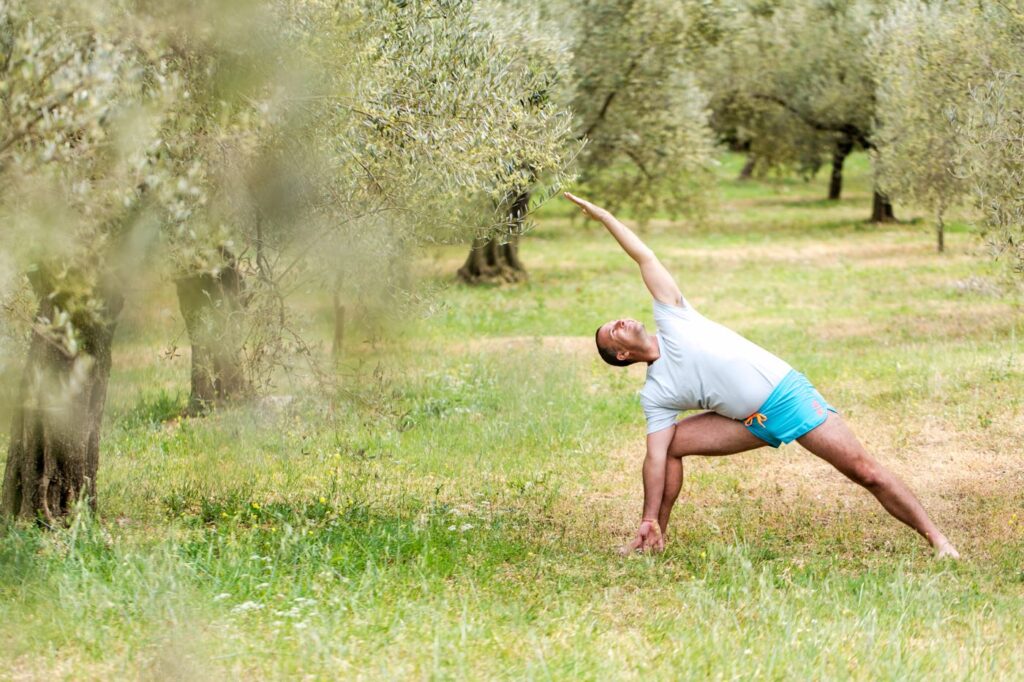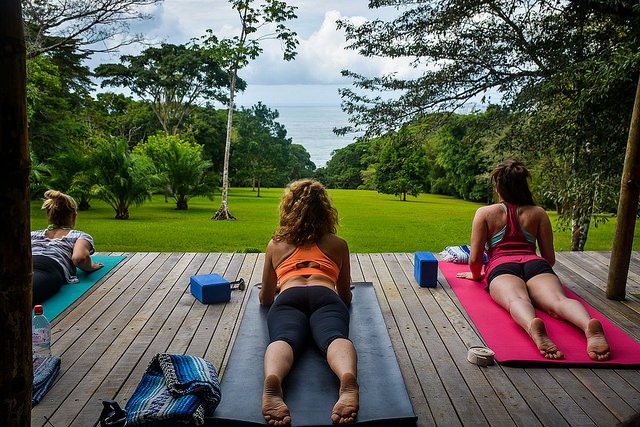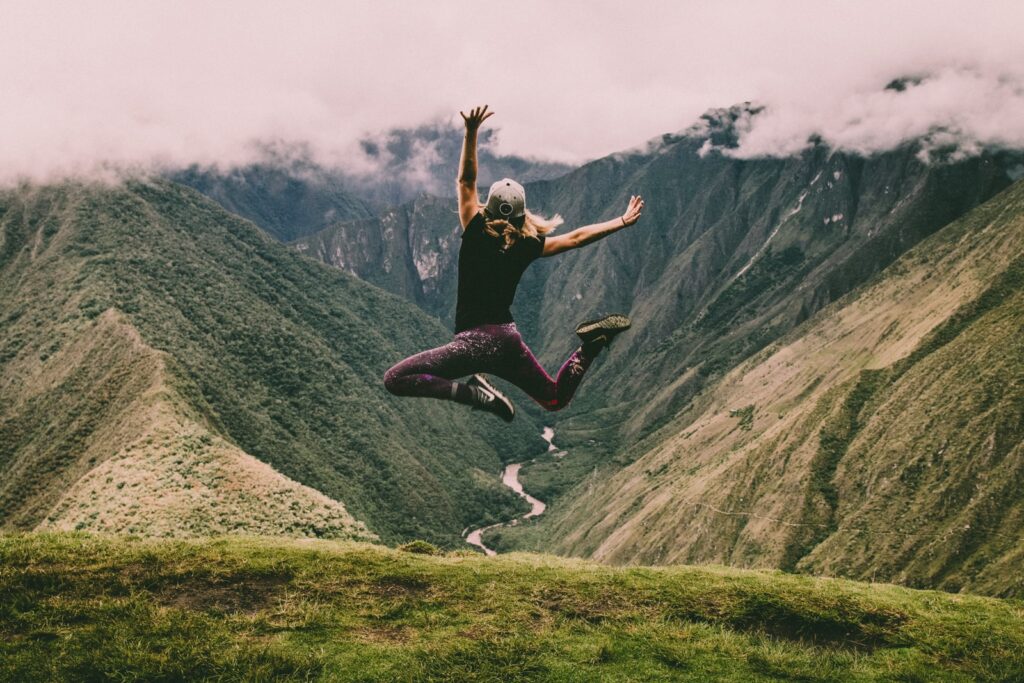Yoga anatomy covers the study of the body’s muscles, joints, tissues, membranes, cells, and more. These are parts of the body that awaken during a yoga class.
As a yoga teacher, or someone looking to take a yoga teacher training, it’s very important to understand what you’re instructing your students to activate in their students’ bodies.
When teaching a yoga class, it’s important you’re able to understand the limitations of the body and its capabilities so that you can help your students get in and out of a pose safely.
This is why the relationship between anatomy and yoga is so important for teachers to know. And this is why it’s often seen as the ‘missing piece’ in yoga. Having a strong background of yoga anatomy training will help your students feel safe in your classes and will help you offer the best guidance.
What is yoga anatomy?
You might be asking yourself what is yoga anatomy? How is it different than regular anatomy? Yoga anatomy covers the study of the body’s muscles, joints, tissues, membranes, cells, and more. It focuses on the body’s structure, while physiology looks at how these function in relation to each other. In yoga, you’ll not only need to learn both, but you’ll also become familiar with the physiology that focuses on channels of energy – the philosophical kind that gets activated by being in certain poses.
If you haven’t figured already, yoga is a holistic system that requires you to know your anatomy as a teacher.
Yoga anatomy is specific to how the body’s structure works together in asana poses. An example of applied yoga anatomy would be, in a Warrior II, our front hip is externally rotated and our front knee is laterally rotated. Understanding yoga anatomy will help you cue your students to engage the right muscle (in this example, it’s their corresponding glute) to find this action in their body. You will also be able to better recognize when your students may be doing things that could cause injury. In the example of this Warrior II, medial (inward) rotation of their knee, while bearing weight, could cause an injury if they did this for too much time and for too often. Yoga anatomy will also help you understand that alignment cues are not one size fits all. Some bodies are stronger in areas than others, so not all cues make sense for every person.
Why is anatomy for yoga teachers important?
Understanding yogic anatomy is crucial for all yoga teachers because it will increase the effectiveness of the asanas you teach and protect your students from creating injuries. You’ll also be better prepared to deal with any existing injuries safely and effectively.
Yoga anatomy is the information you need to know to connect with your body on an intellectual level. And it’s information that you build upon the deeper you go into your yoga practice as a student and teacher.
Be that as it may, many yoga teachers in training seem to have an aversion to learning anatomy. And if you find yourself in that camp, there’s no need to fret!
Yoga anatomy is usually only 10-20% of your yoga teacher training. If your YTT gives you the tools needed to teach a class, then this tiny component will teach you how to make it safe. Yoga Teacher Trainings with Aaron at Blue Osa draw upon Aaron’s proven method of AYAMA™, which dives deep into yoga anatomy and how to cue students in a way that supports body stability.
As a yoga teacher, you only need to learn anatomy in the context of yoga. You certainly don’t need a Ph.D. in anatomy or physiology to instruct your students safely.
When students arrive at class, they trust you to keep them safe. If you’re unsure where to start, I’ve compiled the top 7 things yoga teachers need to know about anatomy. It’s a great starting point for your self-study and will inspire you to become well-versed in the study of yoga anatomy.
8 Things every yoga teacher needs to know about yoga anatomy
To simplify the approach to yoga anatomy, start with these 8 topics of learning.
1. Joint function and limitation
Our bodies move in many different directions, and not necessarily in the same ways. So it’s essential to know the nature of each of the joints, their limitations, capacities and how much weight they can bear. This will help you self-adjust when you feel pain, especially if you’re going to be holding poses for a long period of time. (How long should you hold a yoga pose? Find out here!)
Something that is extremely important to be aware of is the kind of joints that are in your body and where they are. For example, the shoulder has a ball and socket joint, meaning it can move in all directions. In contrast, hinge joints, like the elbows, can only flex toward the midline of the body, and extend. Another ball and socket is your hip and another hinge joint would be your knee.
Let’s put this information into practice. In Padmasana (lotus pose), many people experience pain in their knee.
When you look at this pose, it’s easy to think that your knees play a big role in getting into it. Not only is this incorrect, but it’s dangerous to force your knees to move in a way that isn’t just flexion or extension.
The correct alignment of Padmasana, and the only body part responsible for getting into this shape safely, is the hip joint. The hip is a ball and socket joint, meaning it not only flexes and extends but can also rotate. By externally rotating the hip joint, we create the space for our knee joint to flex and extend above the other leg. If a student cannot externally rotate their hips enough to create space for their knees to flex with ease, they should not attempt Padmasana at all. Even if they think they can.
2. What bones are involved (in yoga)
We have 206 bones in the adult body. When teaching yoga, you don’t have to know the name of each bone and exactly where it is. What you do need to learn is the basic structure of the skeletal system and which bones are in action in the poses you choose to include in your sequence. This will help you understand the structural frame of any given pose and you’ll know what to cue so you can set your students up for success.
3. What muscles are in action (in yoga)
Enter the anatomy of movement!
Just like bones, we have hundreds of muscles in the body. These are categorized as skeletal, smooth, and cardiac muscle. When teaching yoga, you will mainly learn about the skeletal muscles as these are the muscles that are responsible for moving the bones and are under voluntary control. When studying the skeletal muscles, it will be handy to familiarize yourself with the following three functions for any given muscle; the origin, insertion, and key action.
A muscle origin describes how the muscle is attached to the stable bone (via tendons). The insertion describes the attachment of the muscle on the more moveable bone (e.g., the joints via ligaments). And the key action describes what happens during a muscular contraction when the bones are brought together or apart.
Another key part of understanding the anatomy in yoga is understanding AYAMA techniques, Yogi Aaron’s proven muscle activation method that helps increase body stability and eliminate pain. A great place to start in learning yoga anatomy is with the 7 main muscle groups that AYAMA is centered around.
- Trunk rotators – what allows you to twist left and right
- Trunk flexors – what supports you in a forward fold
- Trunk extensors – hold your spine in an elongated shape + counterbalance the force of gravity in the forward fold. In other words, they stabilize your trunk flexors
- Side benders – allow you to bend and extend from side to side (think gate pose) and they also serve as essential trunk and spine stabilizers
- Hip flexors – assist with moving your lower body and stabilizing your hips; hip flexors are what enables you to raise your leg in front of you
- Hip extensors – what enables you to push your leg behind you
- Shoulders – help stabilize your neck + cervical spine and reduces over-compensation in your hips
4. Pain and injury don’t always correlate
If a student has an injury that is painful, their body will send them immediate feedback when they are moving in a way that irritates this injury. There are other kinds of injuries, however, where this feedback loop isn’t activated. Injuries like tissue damage aren’t captured by nerve endings and won’t signal the brain that danger is near.
It’s important to ask your students before class if they have any injuries so you can provide variations of poses, and it’s also important to know how to guide everyone through movement that is safe for everyone, whether a person is aware of an injury or not.
A great way to do this is to implement AYAMA techniques and to avoid cueing your students through poses that will really stretch out their muscles. That’s right – yoga with NO stretching! The reason for this is that stretching the muscles overrides communication between the body and the brain. This destabilizes the body and increases the risk of injury. Instead of stretching, what you’d want to encourage your students to do is activate the muscle groups around the area they are experiencing pain.
You can build sequences of yoga poses using AYAMA techniques and avoid poses that require very intense stretching.
Read more: “How We Are Probably Making Our Back Problems Worse!”
5. Know the anatomical terms and positions
Anatomical terms, aka the language of movement, is a commonly agreed-upon terminology that allows us to work on the same page when discussing the anatomy and physiology of yoga. While it’s not helpful to use anatomical terms when teaching a yoga class, you must be able to demystify the anatomical terms and positions to your students to help cultivate more awareness and precision within their practice.
The language I’m referring to, and a few examples of their terms are;
- Anatomical positions – anterior/posterior, medial/lateral, superior/inferior, etc.
- Planes of movement – transverse, sagittal, frontal
- Joint action – flexion, extension, abduction, lateral tilt, rotations, etc.
- Movements of the scapula – retraction, protraction, elevate, etc.
Understanding what these words mean will help you identify and cue appropriate adjustments in your students’ bodies. And they will learn, too! They’ll be able to enter any class with a higher sense of body awareness, even if a teacher doesn’t offer many anatomical cues.
6. Alignment is not all it’s cracked up to be
Alignment is somewhat of a phenomenon in yoga. There are plenty of myths circulating the concept of alignment to prevent injury and increase the benefit of the pose. Well, that’s not exactly true.
When working with human bodies, there are so many variables to consider that could be affecting someone’s alignment; physical, social, emotional, and mental factors. By forcing your students into ‘correct’ alignment, you may increase whatever tension they are already experiencing that prevents them from ‘correct’ alignment.
A reality to consider is that our bodies can adapt to become stronger in response to whatever load it experiences. Suppose we’re talking about squatting 300lbs, then yes. In that case, alignment is crucial to reduce injury and correctly strengthen the muscles and tissues to withstand such a heavy load. In yoga, however, the load is not significant enough to cause substantial harm. It’s well within our capacity to withhold (considering the joints are completely healthy and happy, and we aren’t talking about inversions). Allowing for a slight ‘misalignment’ in yoga can lead our bodies to better adapt load in this position, ultimately making us stronger in various ways.
All that isn’t to say you should stop guiding your students into traditional alignment. Instead, treat alignment as the posture that allows the student to expend the least amount of energy in a pose. This will foster a sense of body awareness in your students and encourage them to feel a deeper connection between the mind and body.
7. The spine is as sensitive as it is strong
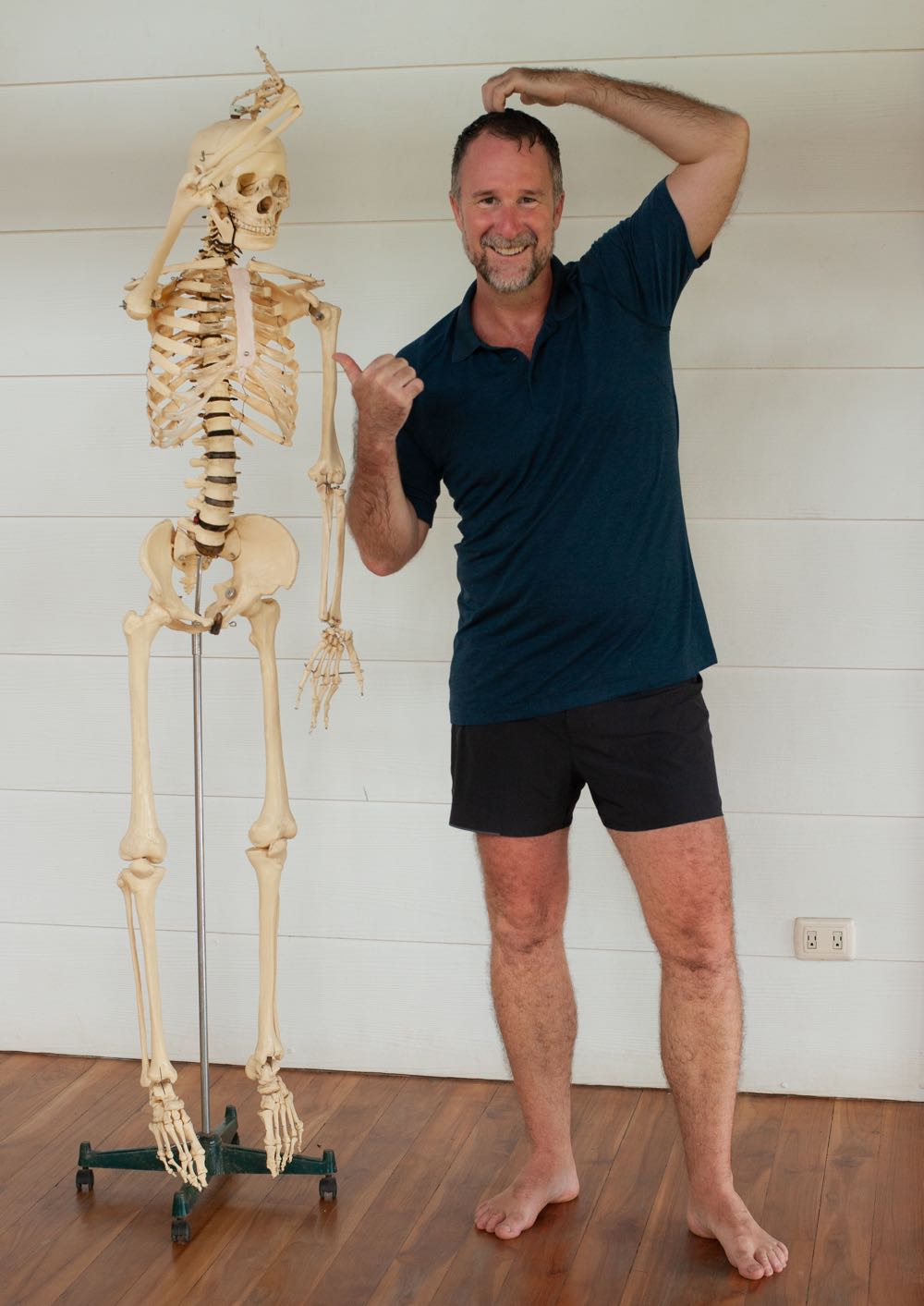 Most of us live in stressed and rigid conditions, meaning the chances of your students arriving with some kind of back pain is highly likely.
Most of us live in stressed and rigid conditions, meaning the chances of your students arriving with some kind of back pain is highly likely.
Any exaggerated or sudden movement of the spine could quickly destabilize the protective muscles surrounding the spinal column. Which could, in turn, lead to spasms in and out of the class. Incorporating your anatomical knowledge in your sequence will prime your students for any kind of spinal extension or pose you have coming up, which will minimize the risk of further injury.
Being the central axis for all human beings, having an https://www.blueosa.com/book-now/yoga-teacher-training/awareness of the spine can help you lead safer classes in so many ways. You can safely target those areas and bring relief to your students (sometimes without them even knowing). You’ll also empower your students by guiding them to sense their spine so that they know how deep to go in their poses. As well as be able to recognize the different levels of tension in the muscles.
It’s important to know that the spine doesn’t exist in isolation. Disengaged core muscles could throw off the spinal alignment and strain the spine. Just as breathing “incorrectly” (from the upper chest and neck musculature) can lead to many physiological changes that affect the spinal column long term. All of which is useful to know when guiding students in a yoga class.
8. Applied Yoga Anatomy and Muscle Activation: The Key To Understanding Yoga and Anatomy
The neuromuscular connection in our bodies is essential for proper muscle function and communication between our brain and the rest of our body. The problem, however, is that many of us have a damaged neuromuscular connection due to many years of prolonged stress, trauma, and overuse.
“AYAMA is a technique to reestablish neuromuscular connections so your brain and muscles can communicate effectively. In the process, we reduce pain and risk of injury while increasing the range of motion, muscle strength, stability, and alignment. It’s a radical new way to practice yoga that focuses on activating and engaging the muscles – without stretching them out – and equips your muscles to handle everyday forces and stresses.”
Yogi Aaron is the only teacher instructing students on how to safely incorporate muscle activation and AYAMA techniques into their anatomical knowledge. For teachers and students, this is a breakthrough in discovering how to live a pain-free life.
In Conclusion
By extending your study of the anatomy of yoga beyond your yoga teacher training, you’ll add credibility to your teaching career. An understanding of yoga anatomy unlocks so much value to what you bring into space and will help distinguish your classes.
In turn, you will enjoy teaching that little bit more, and your students will walk away feeling seen and supported. The goal is to keep your students safe and healthy, and with the above information, you’ll be able to do just that.
See how you can become a trained yoga teacher and leave with extensive knowledge of anatomy of yoga poses and muscle activation. Read about Blue Osa’s Yoga Teacher Training Here.
About Yogi Aaron
Yogi Aaron is the owner, operator, and lead yoga facilitator at Blue Osa and of the yoga teacher trainings.
Creator of Applied Yoga Anatomy + Muscle Activation™ Yogi Aaron brings three decades’ worth of study, mentorship, and experience into his teachings, with a strong emphasis on yoga therapy and alignment.
The Muscle Activation Yoga Classes is an exploration into your body, its muscles, and to learn how to improve its function through using Applied Yoga Anatomy + Muscle Activation™.
Find out more about yoga teacher trainings with Yogi Aaron at Blue Osa Yoga Retreat + Spa.


